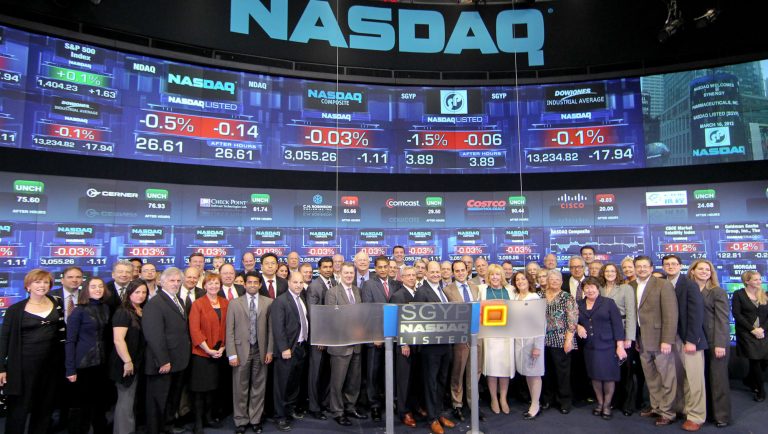
Synergy Pharmaceuticals Inc (NASDAQ:SGYP) picked up some considerable strength throughout the session on Friday, but ended up closing out the day down close to 6%. The driver behind gains was the release of some data from a phase III in irritable bowel syndrome with constipation (IBS-C) patients, but post-initial response, there doesn’t seem to be too much to get excited about.
Here’s our take.
The drug in question is called plecanatide, and its lead indication is a condition called chronic idiopathic constipation (CIC). There’s an NDA with the FDA right now, due for PDUFA in January, and this latest data relates to what will be submitted as an extension on the CIC approval, if first application gets a green light.
The drug is a pretty interesting one, with a mechanism of action not yet in common use, and would fill a pretty dire unmet need in the US. More than 14% of the US population suffers from CIC or IBS-C, weighted towards women and the elderly, and the current options are both limited and – in many cases – ineffective. They can also cause some pretty nasty side effects. MOA is simple, but elegant. In our bodies we’ve got what is called uroguanylin, a peptide that exists in the small intestine, and regulates electrolyte and water transport in intestinal epithelia (in other words, how smoothly stools can pass through the intestine). In patients with CIC or IBS-C, there is often a lack of uroguanylin, and this is one of the leading causes of the symptoms.
Plecanatide is also a peptide, and one that is almost structurally identical to uroguanylin (it’s composed of 16 amino acids, as is uroguanylin, but with one amino acid change). The theory is, therefore, that the substitution uroguanylin (or maybe better to say the supplementing of) with plecanatide can improve GI tract function and – by proxy – improve the lives of CIC or IBS sufferers.
The data for the CIC target, as mentioned, is already with the FDA. It’s indicative of efficacy, and across a couple of thousand sufferers two active arms (high and low dose) beat out against a placebo arm, and statistically significantly at that. However, the numbers aren’t fantastic. Around 20% of the patients hit the primary in the active arms – a significantly greater response rate of durable overall complete spontaneous bowel movements (CSBM) – compared to a little over 11% in the placebo arm. It’s a hit, but far from out of the park.
And the latest data is similar in inference.
This one looked at what’s referred to as an Overall Response, defined as a patient who fulfills both a ≥ 30% reduction in worst abdominal pain and an increase of ≥ 1 CSBM from baseline, in the same week, for at least 50% of the 12 treatment weeks. Of a little over one thousand patients between 21-24% responded against this definition in the active arms, and just shy of 15% responded. In the placebo arm. Again, it’s stat sig, but game changing? We don’t thing so.
Now, the chances are that both indications will get approved. As mentioned a little earlier, both CIC and IBS-C are unmet needs, and large ones at that, and the FDA will likely to be happy to give a nod to a drug that at least gives physicians a fresh treatment option, assuming it’s safe, and it looks to-date as thought there aren’t any safety issues (a bit of diarrhea, some appetite alterations, but that’s about it).
In turn, we’ll likely also see markets push Synergy’s market capitalization higher, as the market opens up for the drug and the company pushes forward in to a commercialization phase. However, when it comes to top and bottom line, the implications are far less clear. Some analysts say the drug is in line to bring in $500 million in peak sales. Others $800 million. One as high as $1.2 billion. We think the low end of this is far more likely than the higher end, and on a 2X multiplier, this gives a fair value of of somewhere in the region of $1.1 billion for Synergy based on plecanatide alone. Against its current market cap of a little over $900 million, therefore, there’s a small degree of upside on offer.




